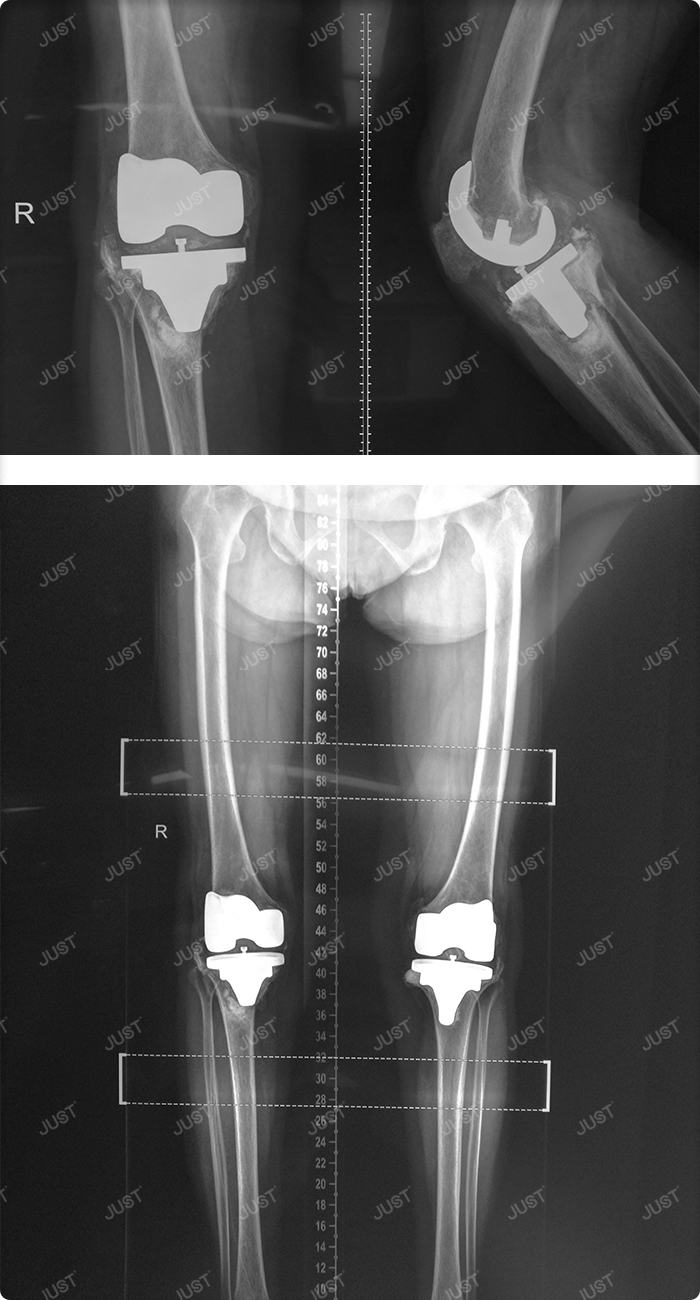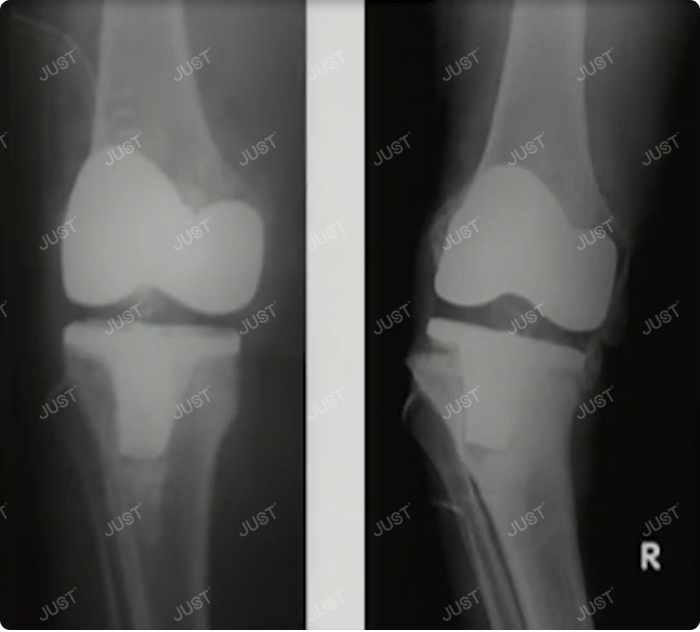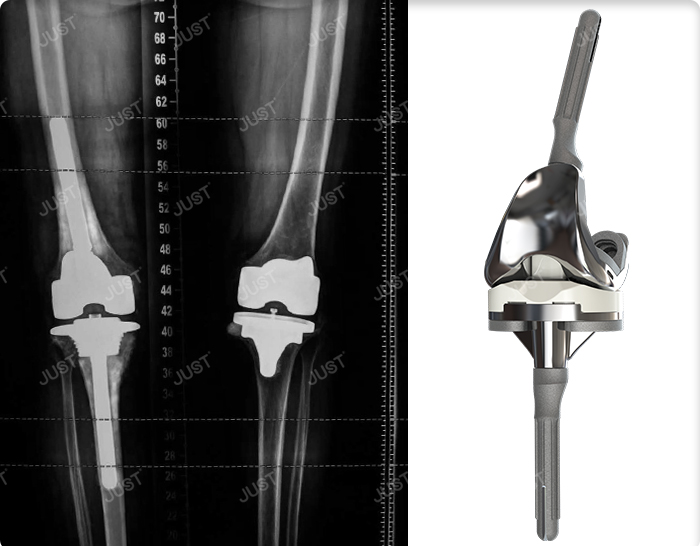Knowledge of revision knee joint (2)
 Aug. 17, 2020
Aug. 17, 2020
Knowledge of revision knee joint (2)
Aseptic loosening and instability. It is the second most common indication for revision.
The causes of early loosening include:
1. Technical reasons: force line, soft tissue balance, cement technology, etc
2. The patient's own reasons: osteoporosis, high activity, overweight, etc
3. Causes of prosthesis: design, material, etc
The clinical manifestations of aseptic loosening include pain, swelling, weakness, dyskinesia, snapping, joint deformity, etc. (symptoms and signs worsen after activity)
Imaging findings:
1. Continuous light transmission line greater than 2mm.
2. The position and angle of prosthesis were changed.
3. Pay attention to the position of the film and the angle of the knee joint to influence the observation and judgment.
4. Full length film of lower limbs recommended.

Differential diagnosis:
1. Discontinuous light transmission lines do not necessarily indicate looseness.
2. Progressive, or accompanied by symptoms may be loose.
In terms of diagnosis:
1. There are obvious symptoms and definite diagnosis.
2. Once the diagnosis is confirmed, the operation should be carried out as soon as possible.
3. Exclusion of other conditions, especially low toxicity infections (difficult).
(bacterial culture of joint fluid must be done during revision surgery).
Delayed revision can result in further bone defects.

Contraindication:
1. General condition can not tolerate revision surgery.
2. Uncontrolled infection.
3. Relative contraindications: no obvious symptoms, high expectations of patients.














